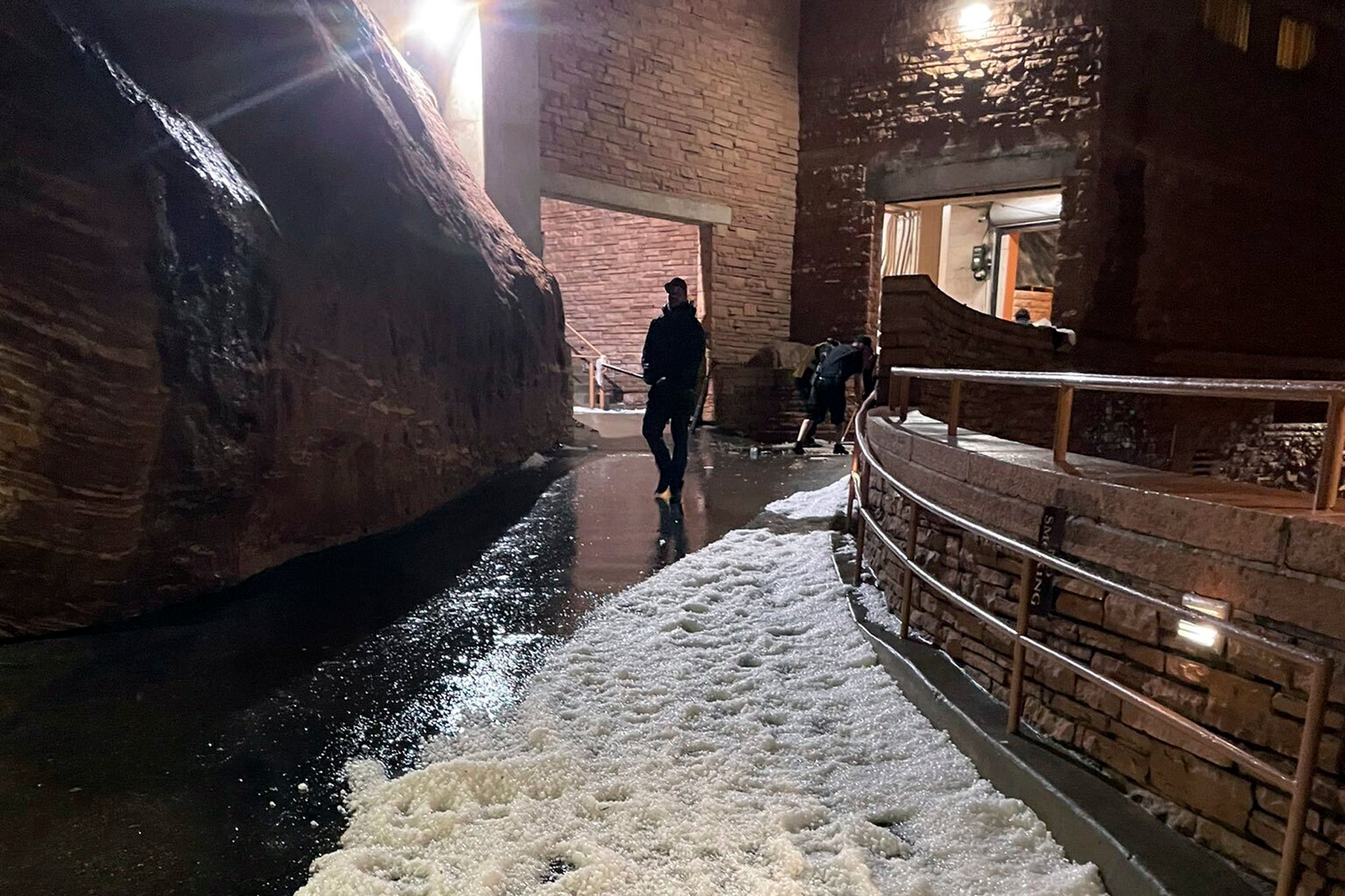A freak storm left Louis Tomlinson fans hospitalised. What causes giant hail?
A hailstorm left nearly 100 people with injuries at a concert outside Denver on Wednesday
Hail is not the most common form of weather in the United States, but it can be one of the more dangerous — especially when hailstones increase in size.
On Wednesday night at the Red Rocks Park and Amphitheatre outside of Denver, Colorado, nearly 100 attendees at a Louis Tomlinson concert were left injured after being caught in a hailstorm. At least seven of those people needed attention at a hospital.
Unfortunately, with climate change intensifying, scientists believe there is a chance that the number of major hailstorms could increase in certain parts in the world in the coming years.
What is hail?
According to the National Oceanic & Atmospheric Administration (NOAA), hail is a “form of precipitation consisting of solid ice that forms inside thunderstorm updrafts”. It can severely damage property and be deadly to people.
What causes giant hail?
The general scientific consensus is that climate change is making the appearance of giant hail more common.
There are several reasons why. Julian Brimelow, a physical sciences specialist at Environment and Climate Change Canada, told the BBC that the formation of giant hail requires a sufficient amount of moisture, powerful updraughts, and a weather front.
As climate change intensifies, the Earth’s atmosphere is getting warmer. That means the height at which ice melts in the atmosphere is increasing, meaning that smaller hailstones are more likely to melt before hitting the Earth. Large hailstones, meanwhile, will not.

“The hail will be more severe when it does occur, because there will be more instability in the atmosphere which can lead to the formation of much larger hailstones,” Tim Raupach, a researcher at the UNSW Sydney’s Climate Change Research Centre, said. “So when the hail does survive this extra melting, it will be larger and more severe when it does actually hit the surface.”
Which areas of the world will be affected?
There is still a significant amount scientists don’t know about how climate change will affect the frequency and intensity of hailstorms, but at least one study suggests that different parts of the world will be impacted differently in the coming decades.

The study led by Mr Raupach in Sydney found that hailstorm frequency is expected to decrease in North America and East Asia while increasing in Europe and Australia but that the intensity of the storms is expected to increase everywhere.
According to NOAA, Colorado, Nebraska, and Wyoming typically have the most hailstorms in the US each year.
Join our commenting forum
Join thought-provoking conversations, follow other Independent readers and see their replies
Comments
Bookmark popover
Removed from bookmarks